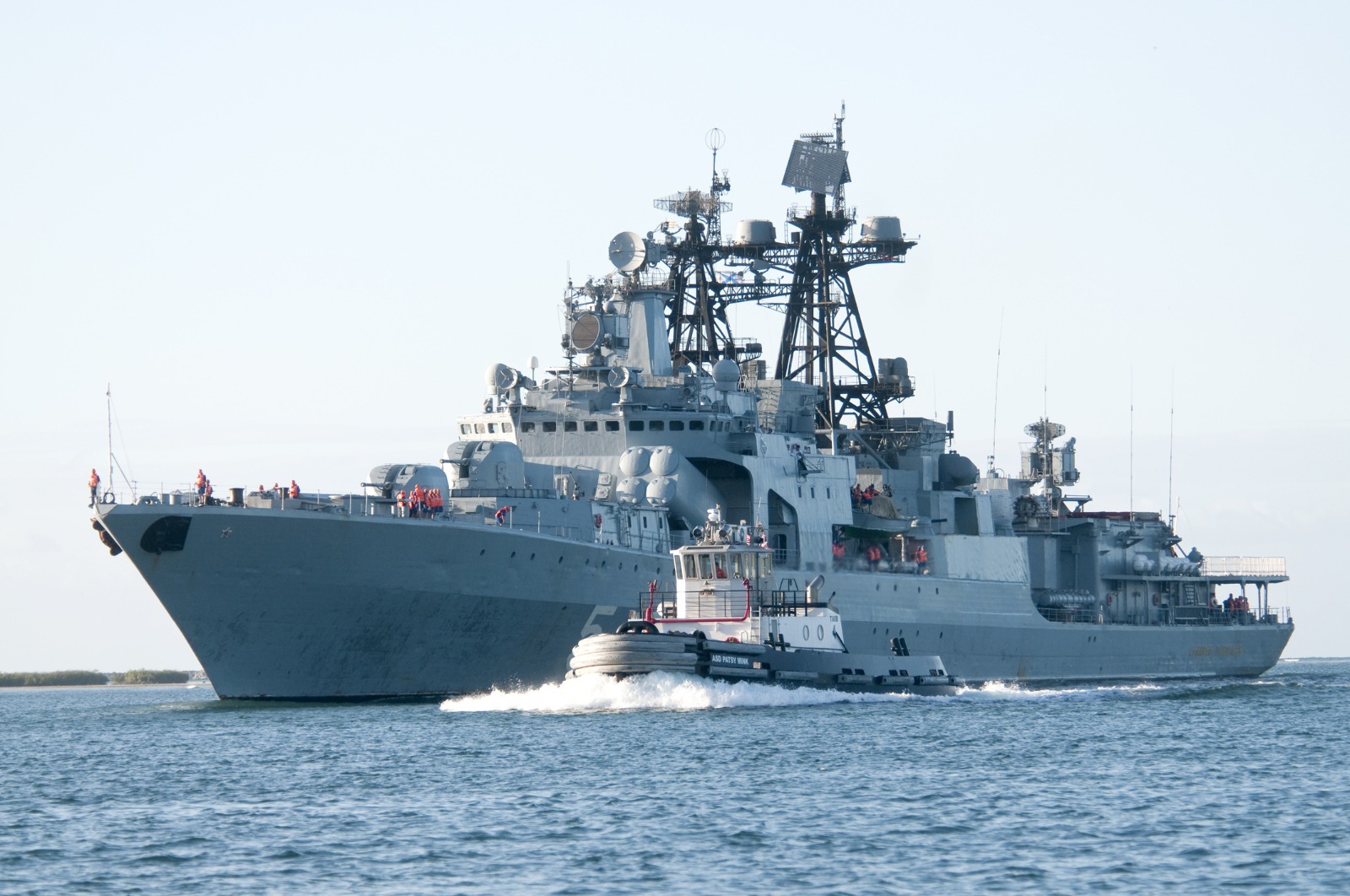As the US Navy escalates its presence in East Asia, deploying a nuclear-powered aircraft carrier in South Korea, the Russian Navy, on the other hand, has reappeared in the Southeast Asian nation of Thailand.
In a major diplomatic event, a vessel from the Russian Navy’s Pacific Fleet, “Admiral Panteleyev,” visited Thailand, marking the first such occurrence since 2019.
The large anti-submarine ship arrived at Sattahip, the main base of the Royal Thai Navy. It was welcomed by an orchestra performing the Soviet classic “Katyusha,” a correspondent from TASS reported.
“We are pleased with the visit of the Russian ship to Thailand, which is the heart of Southeast Asia. We believe that it is necessary to maintain normal friendly relations with all countries, and Russia is no exception here,” expressed a Royal Thai Navy serviceman, commenting on the crucial visit.
While the Russian Navy’s Udaloy-class destroyer “Admiral Panteleyev” is in Thailand, talks have surfaced concerning the possibility of a reciprocal visit by a Thai Navy ship to Vladivostok. This underscores the shared interest in cultivating more robust ties between the two nations.
🇷🇺🇹🇭
Okręt rosyjskiej Floty Pacyfiku „Admirał Panteleev” przybył z wizytą do Tajlandii. pic.twitter.com/Mvy2W7Vp8X— WarNewsPL (@WarNewsPL1) November 22, 2023
Before this current visit, Admiral Panteleev had already been to Sattahip in October 2019, along with the missile cruiser Varyag and the tanker Pechenga, for a visit. Since then, Russian warships have not visited Thai waters, underscoring the significance of this recent visit as a noteworthy diplomatic gesture.
The unfolding events coincide with the United States Navy’s deployment of an aircraft carrier to South Korea in response to North Korea’s provocative actions.
On November 22, South Korean Defense Minister Shin Won-sik even announced plans for joint maritime drills with the United States and Japan, featuring the participation of a US aircraft carrier.
This collaborative effort aims to enhance military preparedness and convey a resolute stance against North Korean provocations.
Reports indicate that the navies of South Korea and the US are scheduled to conduct joint drills on November 25, with the Japanese Navy joining on November 26.
Rear Admiral Carlos Sardiello, the commander of carrier strike group one, said that the presence of the USS Carl Vinson underscores the US’s unwavering commitment to ensuring its ally’s security.
The deployment signals a dedication to leveraging the entirety of its military capabilities, including nuclear capabilities, to defend the interests of its ally.
Russia-Thailand Naval Diplomacy
The longstanding tradition of Russian ship visits to Thailand has deep historical roots. This tradition began on February 19, 1863, with the arrival of the Russian Empire’s fleet, consisting of the clipper “Gaydamak” and the corvette “Novik,” which docked at the mouth of the Chao Phraya River alongside Bangkok.
King Mongkut (Rama IV) warmly welcomed the Russian sailors, initiating a connection that would evolve over the years.
In February 1874, Rear Admiral Fyodor Brumaire’s squadron returned to Siam, coinciding with the reign of King Rama V, who expressed a desire to foster friendly relations with Russia.
The Pacific squadron, led by Rear Admiral Avramiy Aslanbegov, continued this tradition with a visit in April 1882. King Rama V further solidified the bond by honoring Russian officers with commemorative medals.
The pivotal moment in the diplomatic narrative occurred in March 1891 when Tsarevich Nikolai Alexandrovich, the future Russian Emperor Nicholas II, arrived in Bangkok aboard the cruiser “Pamyat Azova.”
This visit significantly propelled the strengthening of interstate ties. Subsequently, the reciprocal visit of King Rama V to the Russian Empire in May 1898 formalized diplomatic relations between the two countries, highlighting the enduring importance of these historical maritime interactions.

Nonetheless, as per the Pacific Fleet’s press service announcement, the warships, namely the “Admiral Tributs” and “Admiral Panteleyev,” set sail from Vladivostok in early October to undertake assigned tasks in the “Asia-Pacific region (APR).”
Before they departed from the fleet’s main base, the ships underwent emergency battle preparations and navigational procedures before transitioning to their designated area.
In Peter the Great Bay, the vessels embarked Ka-27 helicopters from the Pacific Fleet’s naval aviation, configured for anti-submarine operations and search and rescue missions.
The visits to friendly nations were undertaken as a strategic initiative to fortify partnerships in the Asia-Pacific region.
Russian Navy said that the primary objective of the task force’s extensive voyage is to prominently display the St. Andrew’s flag in the region, symbolizing a commitment, and to advance naval cooperation with foreign countries.
- Contact the author at ashishmichel(at)gmail.com
- Follow EurAsian Times on Google News